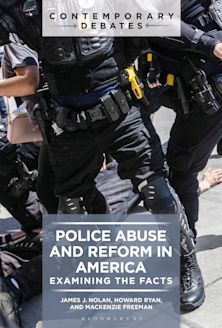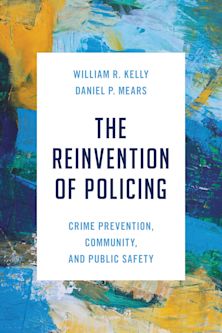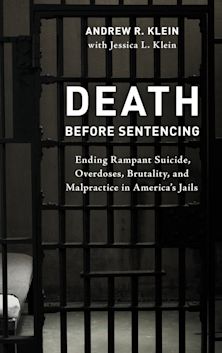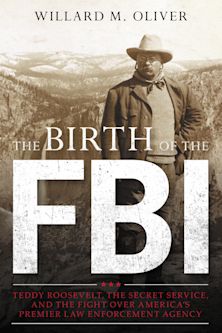- Home
- ACADEMIC
- Criminology
- Penology, Policing and Crime Prevention
- The Culture of Urban Control
This product is usually dispatched within 3 days
- Delivery and returns info
-
Free CA delivery on orders $40 or over
You must sign in to add this item to your wishlist. Please sign in or create an account
Description
The Culture of Urban Control: Jail Overcrowding in the Crime Control Era explores and analyzes the growth and expansion of the United States’ largest single-site urban jail system. Through an analysis of a United States Federal Court initiated consent decree this research provides a narrative of criminal justice policy, politics and legal maneuvering between the years of 1993 and 2003 associated with overcrowding within the Cook County Jail. As a result of increased policing presence and subsequent arrests during the crime control era of the 1990’s, the Cook County Department of Corrections experienced a continually overcrowded correctional facility resulting in pre-trial and post-convicted inmates sleeping on floors in overcrowded and dilapidated facilities. Beginning in the early 1990’s and under the supervision of the federal court, Chicago and Cook County, Illinois undertook the largest expansion of local level incarceration and correctional control in their history. The disputing process between local, state and federal level claims-makers within the legal arena and through media representations are analyzed in conjunction with infrastructure growth, changing correctional populations, community level expansion of correctional programming and the social reality of the inmate experience. How local level corrections and federal interdiction were shaped by local level politics and criminal justice systems are examined.
Table of Contents
Tables and Figures
Introduction
Chapter 1: From Past to Present: Correctional System Overcrowding and Institutional Reform
Chapter 2: Conditions of Confinement: The Social Reality of the Jail Inmate
Chapter 3: The City within the City: Altering Population and Space
Chapter 4: Expanding the Jail into the Community: Growth, Development, and Mutual Interest
Chapter 5: Constructing the Jail within Local Media: Presenting Expansion to the Public
Chapter 6: The Politics of Local Level Punishments: Presiding over the Culture of Control
Conclusion
Appendix
Bibliography
Index
About the Author
Product details
| Published | Feb 26 2015 |
|---|---|
| Format | Paperback |
| Edition | 1st |
| Extent | 198 |
| ISBN | 9781498511384 |
| Imprint | Lexington Books |
| Dimensions | 226 x 154 mm |
| Series | Issues in Crime and Justice |
| Publisher | Bloomsbury Publishing |
About the contributors
Reviews
-
As a timely addition to the legacy of John Irwin, The Culture of Urban Control offers an in-depth—and sophisticated—snapshot of jail overcrowding in Chicago. With a critical eye on the conditions of confinement, litigation, and the media, Dr. Walsh delivers a complex picture of current penal reform.
Michael Welch, Rutgers University
-
Although neglected by criminologists, the jail plays a crucial role in shaping urban communities, and none more so than the massive and storied Cook County Jail in Chicago. John Walsh’s fascinating analysis therefore makes a welcome contribution to the criminology of social control.
Shadd Maruna, Chair of Sociology, Social Policy and Criminology, University of Liverpool; author of Making Good: How Ex-Convicts Reform and Rebuild Their Lives
-
Peppered through this account are glimmers of light revealing what happens within the day-to-day working of the Cook County criminal justice system, what occurred among the various stakeholders associations with problems typical of large urban criminal justice systems, and what resulted from judicial and other efforts to ameliorate and resolve disputes affecting the operations and outcomes of Chicago’s jail. A 'prospector' digging for 'gold' will find some within these pages. . . .[T]he author’s focus on an urban jail, [is]valuable, and should be worthy of starting a broader conversation about the role and operation of jails.
The ICCA Journal


































